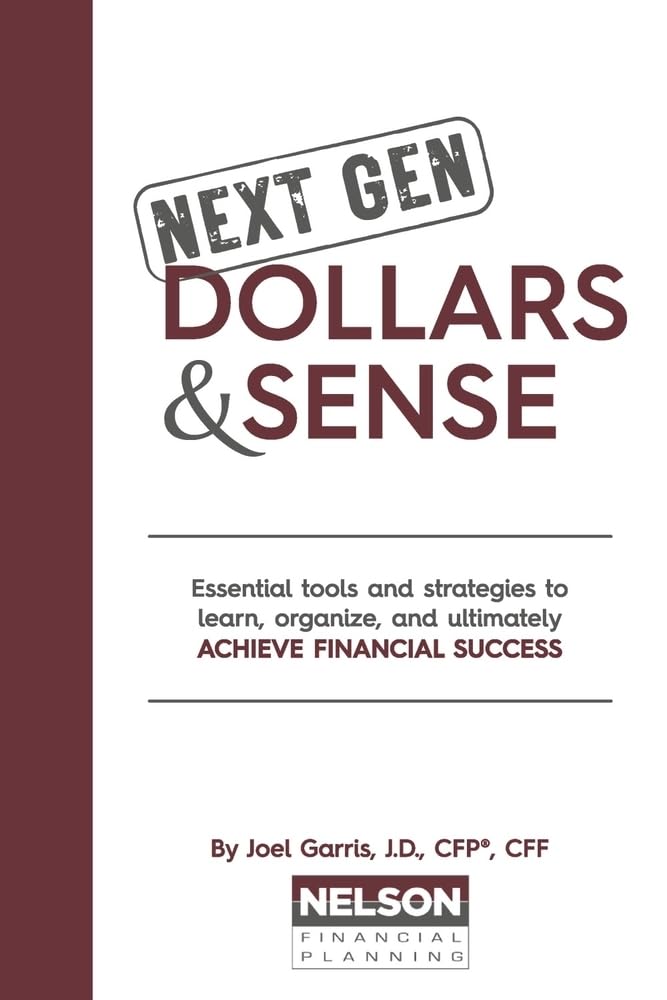
Is Social Security now tax-free? Ever wondered if you can make your Social Security tax-free?
It’s a common question these days among seniors, but the answer is complicated. Social Security is still taxable, but those over age 65 qualify for an additional standard deduction. Thanks to a new provision tucked into the One Big Beautiful Bill Act (OBBBA), a powerful tax break called the Senior Deduction is giving Americans 65 and older a rare opportunity to keep more money in their pockets.
Retirees 65+ now get a $6,000 per person tax deduction – regardless of whether they collect Social Security. But this deduction is more than just a line item – it’s a strategic tool that could change how you withdraw from IRAs, qualify for benefits, and plan your retirement income.
Commonly referred to as the “senior deduction,” this provision offers a $6,000 exemption per qualified individual – and it’s already generating buzz among retirees and financial planners alike!
But what does this deduction really mean for your tax return? Who qualifies? And how can you use it to optimize your retirement income strategy?
In this post, we’ll walk you through how this new deduction works, who qualifies, and – most importantly – how to leverage it as part of a smarter retirement income plan.
What is the Senior Tax Deduction?
“There’s a $6,000 deduction per person if you’re over age 65 – that’s $12,000 for a married couple! And that’s on top of the standard deduction.” – Joel Garris
The Senior Tax Deduction is a brand-new federal tax exemption introduced in the OBBBA, starting in 2025 and availalbe through 2028.
If you’re 65 or older, you’ll be eligible for a $6,000 deduction, per person, right off your Adjusted Gross Income (AGI) – regardless of whether you claim Social Security or itemize your deduction.
It provides:
- $6,000 exemption per qualified individual
- Married couples can claim $12,000 total
- Applies to anyone age 65 or older by the end of the year, regardless of whether they collect Social Security
- Phase-out begins at $75,000 for single filers and $150,000 for joint filers
- Phase-out rate: 6% of income over the threshold
- Full phase-out at $175,000 (single) and $250,000 (joint)
This deduction stacks on top of the regular standard deduction, meaning you may not need to itemize to benefit.
Why it matters: most retirees fall into a lower tax bracket. This enhanced deduction means more of your income stays in your pocket, especially when combined with smart IRA withdrawal planning and the expanded SALT cap.
“While I had high hope for this one, it doesn’t go far enough to eliminate Social Security which was an area of the tax code that truly needed reform but fell short. However, it does provide a $6,000 exemption for each qualified individual.” – Christina Lamb
Who Qualifies for the Senior Deduction?
To qualify, you must meet two simple conditions:
- Be 65 or older by December 31 of the tax year
- Have a modified adjusted gross income below the phase-out limits
- You do not need to be receiving Social Security
- You cannot claim the deduction if you’re under 65 – even if you are collecting benefits
“We have had many clients confuse this because it’s still being referred to as the ‘social security deduction’ but you don’t have to be on social security to get this deduction. Some clients who are collecting Social Security don’t actually qualify because they don’t meet the age requirement.” – Kristin Castello
This deduction has been misnamed by some as the “Social Security deduction,” but make no mistake: it’s about age, not whether you’re collecting benefits.
How Does It Work with Other Deductions?
The senior deduction works like this:
- It reduces your Adjusted Gross Income (AGI)
- You can still itemize your deductions and claim the senior exemption
- It stacks with the standard deduction, which was also permanently increased under OBBBA
“The deduction reduces your adjusted gross income . . . you can take the deduction whether or not you itemize.” – Christina Lamb
How to Use the Deduction to Your Advantage – Real-Life Impact
Let’s say you’re a retired couple, both over 65, withdrawing $20,000 annually from your IRAs. With the senior deduction, you can potentially withdraw up to $32,000 tax-free – no triggering of federal income tax.
“This means you could potentially take out an extra $6,000 or $12,000 from your IRAs and not incur tax.” – Joel Garris
This creates opportunities for:
- Roth IRA conversions in low-tax years
- Making extra travel or healthcare withdrawals
- Staying under MAGI thresholds to qualify for additional benefits
It’s not just about paying less tax – it’s about using this deduction as a lever for strategy, long-term planning.
Key Planning Strategies to Maximize the Deduction
Here are a few key ways to maximize your senior deduction from 2025 to 2028.
Income Management – Stay Under the Threshold
Keep your modified adjusted gross income (MAGI) below the phrase-out thresholds to retain the full deduction which is $75,000 (single) or $150,000 (joint). This may involve:
- timing IRA withdrawals
- deferring income
- using ROTH accounts
“If you’re getting close to that phase-out threshold, even small extra withdrawals can reduce or eliminate the deduction.” – Joel Garris
Run a Tax Projection
Use a tax professional or your fiduciary planner to forecast your taxes before making withdrawals. Have them run annual tax projects to:
- avoid crossing phase-out thresholds
- optimize withdrawal amounts
- coordinate with other deductions
“Running an actual tax return projection rather than just guesstimating ensures people make accurate decisions about how to take advantage of this new deduction.” – Joel Garris
Consider “Bunching”
Stack medical or charitable deductions in one year to surpass itemizing thesholds while still claiming the senior deduction.
Why This Matters for Retirees
The senior deduction is more than just a line on your tax return – it’s a strategic tool with real power. It can:
- reduce the taxes you owe
- increase the cash you keep each year
- create opportunities to make tax-free withdrawals
- help you avoid being forced into tax traps later
“This additional deduction may save you from having to file a tax return or may give you an opportunity to withdraw more money without having to pay extras.” – Joel Garris
Let’s dig deeper into what this really means and why it matters so much if you are over 50 and aiming for a comfortable, stable retirement. Here are 5 ways it matters if you are over 50.
1. Reduce Your Tax Burden
Because the senior tax deduction reduces your Adjusted Gross Income (AGI), it cuts your taxable base before most deduction or credit calculations. Lower AGI means you may:
- slip into a lower tax bracket
- qualify for other income-based deductions or credits
- reduce the portion of Social Security benefits that are taxable
According to IRS rules under the One Big Beautiful Bill Act, this deduction is available from 2025 through 2028, and is in addition to your standard itemized deductions.
In effect, the deduction helps a large portion of retirees offset tax burdens they once thought unavoidable. Some analyses suggest that up to 88% of Social Security recipients may no longer owe federal tax on their benefits because their deductions now exceed their taxable base.
2. Increase What Lands in Your Pocket
What good is a deduction if it doesn’t free up cash? With the senior deduction in place:
- you keep more of your withdrawals from IRAs, 401(k)s, or investments
- you preserve more of your Social Security income
- you have extra flexibility for health costs, travel, or emergencies without triggering higher taxes
For example, a married couple where both spouses are 65+ could get a $12,000 deduction. That’s real income protection.
3. Create Windows for Low- to No-Tax Withdrawals
One of the most compelling uses of this deduction is strategic timing. Because the deduction phases out at $75,000 MAGI (single) or $150,000 (joint filers), there are years when your income profile may be low enough to take advantage of tax-free withdrawals or Roth conversions.
Many retirees wait until Required Minimum Distributions (RMDs) force large withdrawals. But with this age-based deduction, you can:
- withdraw a larger portion of funds without pushing yourself into a higher tax bracket
- use “filling the gap” years wisely
- offset gains or taxable income more aggressively
This means you could potentially take out an extra $6,000 or $12,000 from your IRAs and not incur tax.
4. Delay or Avoid Forced Tax Surprises Later
Taxes in retirement often surprise people. You might not expect to owe much, but withdrawals, Social Security, and capital gains can suddenly stack up. The senior deduction helps you better control that unpredictability.
By lowering your base AGI, you can delay “tax creep” – a scenario in which increasing slowly pushes you into higher brackets or phases out benefits. You’re giving yourself breathing room.
In essence, the deduction becomes a buffer – a cushion you can lean on when withdrawals, investment income, or benefits change.
5. Strengthens Long-Term Planning or Flexibility
This deduction isn’t just useful in a single year – it scales across your retirement planning. Because it’s available for four years (2025 – 2028) under current law, it gives you a window to optimize lifetime tax strategy.
- adjust your mix between Roth and taxable accounts
- smooth out withdrawal schedules
- react to life events (medical costs, inheritance, market dips) with less tax drag
- better plan legacy and estate decisions with confidence
As one external analysis from Bankers Life puts it: the new senior deduction provides a “powerful tool in the retirement toolkit” for many Americans.
Don’t Forget the Mental Side of Retirement
Retirement isn’t just about tax breaks and deductions – it’s also a major identity shift. Many individuals aren’t emotionally prepared for how different life feels when the structure of work disappears.
“The real challenge is: what are you retiring to? Not what are you retiring from.” – Rob Field
Adding tax stress to that transition only makes it worse. Planning early and clearly – knowing your deduction eligibility, cash flow, and purpose – can help you retire with confidence and peace of mind.
FAQs About the Senior Tax Deduction
Do I need to be on Social Security to claim the deduction?
No. Eligibility is based on age (65+), not whether you are receiving Social Security benefits.
Can I claim the deduction if I itemize?
Yes. It’s an additional deduction and does not impact itemized deductions.
What is modified adjsuted gross income (MAGI) and how do I calculate?
MAGI is your AGI plus certain excluded income (e.g. foreign income). It’s used to determine income phase-outs for the senior deductions.
Will this deduction eliminate my need to file a tax return?
Possibly. If your income is only Social Security and you qualify for the deduction, you may not need to file.
Final Thoughts: Make the Most of the Senior Deduction Window
Don’t miss this opportunity. This deduction isn’t forever – it’s available only from 2025 to 2028. It is a rare chance to reduce your tax burden without jumping through hoops. In those four years it could mean thousands of extra dollars in your pocket, peace of mind in retirement, and new opportunities to optimize your finances.
Take action now.
- review your current and future AGI
- review your income sources
- consider Roth conversions in low-income years
- work with a fiduciary financial advisor and schedule a tax planning session
- don’t assume your CPA is proactively planning this for you
Whether you’re already retired or planning to retire soon, this provision can make a meaningful difference in your financial life right now. Make the most of this deduction while it lasts.
“We do our best to stay on top of all these changes and to give you guidance on the best approach for what makes sense for you.” – Joel Garris
Nelson Financial Planning Can Help
At Nelson Financial Planning, we specialize in helping retirees navigate complex tax changes. Our team of Certified Financial Fiduciaries, CPAs, and Social Security Advisors are here to:
- run personalized tax projections
- coordinate retirement withdrawals
- optimize your deductions
- ensure you’re not leaving money on the table

Free Resource: Get the Book!
When you’re ready to take these strategies further, Nelson Financial Planning offers a free in-office consultation – plus a complimentary copy of our newest book NextGen Dollars & Sense.
ABOUT THE AUTHOR
Joel J. Garris, JD, CFP®, is the President and CEO of Nelson Financial Planning and the voice behind the Dollars & Sense podcast. A seasoned financial advisor with over 20 years of experience, Joel helps everyday investors make sense of complex markets with clarity and confidence. When he’s not simplifying retirement strategies or decoding economic trends, he’s probably on air delivering straight-talk financial advice – no fluff, just facts.

- 8 Wonders1
- Bank Investments3
- Beating Inflation1
- Budget for Retirement4
- Corporate Transparency Act2
- Digital Currency1
- Energy Tax Credits1
- ESG Funds1
- Featured Blog0
- Financial Planning11
- Financial Success3
- Importance of Dividends2
- Investment Portfolio5
- Investment Strategy2
- IRA1
- Joel Garris1
- Nelson Financial Planning5
- Net Worth Improvement1
- Next Gen Dollars and Sense1
- One Big Beautiful Bill Act (OBBBA)1
- Pension Plans1
- Retirement “Secure” Act2
- Retirement Income Planning2
- Retirement Planning5
- Retirement Regrets5
- Social Security4
- Tax Liability3
- Tax Planning7
- Year-End Tax Changes3






